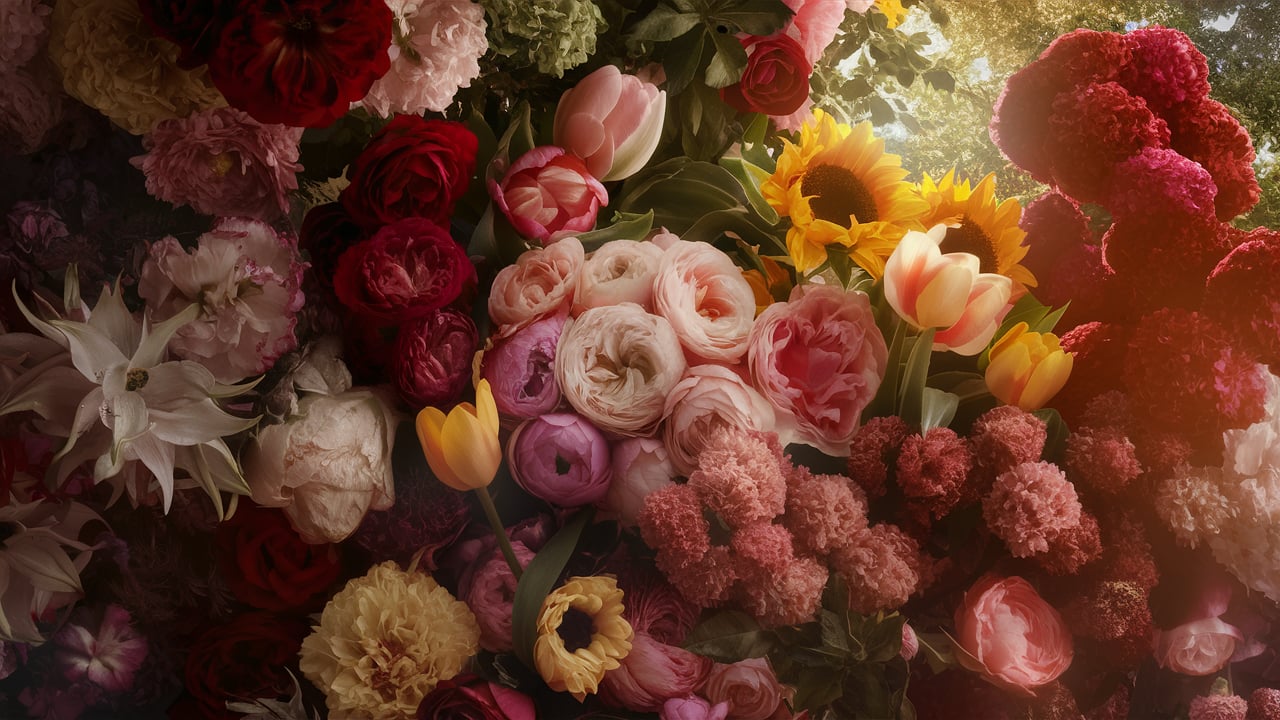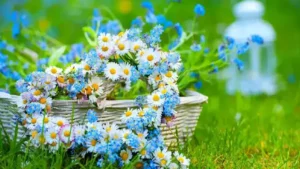
Beautiful:by5oj2_qmci= Flowers have captivated human hearts and minds for centuries, their vibrant colors and delicate forms inspiring countless works of art, literature, and cultural traditions. From ancient mythology to modern-day celebrations, flowers hold a unique place in our lives, embodying beauty, emotion, and meaning.
The Universal Language of Flowers
Beautiful:by5oj2_qmci= Flowers are often considered a universal language, transcending barriers of culture and geography. Their beauty speaks to a fundamental human appreciation for nature’s artistry. A single bloom can convey a multitude of emotions—love, joy, sorrow, and hope—depending on its context and arrangement.
Symbolism and Significance
Each Beautiful:by5oj2_qmci= Flowers carries its own unique symbolism, often rooted in historical and cultural contexts. For instance, roses are universally recognized as symbols of love and passion. In Greek mythology, roses were associated with Aphrodite, the goddess of love, while in Christianity, they represent the Virgin Mary. The color of the rose further refines its meaning: red for deep love, white for purity, yellow for friendship, and pink for admiration.
Lilies, on the other hand, are often linked to purity and renewal. In ancient Egypt, lilies were a symbol of fertility and rebirth, and they are frequently depicted in art and hieroglyphics. In Christian iconography, lilies are associated with the Virgin Mary and the resurrection of Christ, making them popular in Easter celebrations.
Orchids, with their exotic and intricate forms, symbolize beauty, strength, and luxury. They have been prized in various cultures, from the ancient Greeks who believed orchids could determine the gender of unborn children to the Victorians who collected and displayed them as a sign of wealth and sophistication.
Flowers in Cultural Traditions
Beautiful:by5oj2_qmci= Flowers play a significant role in cultural traditions around the world. In Japan, the art of ikebana, or flower arranging, is a disciplined practice that emphasizes harmony, balance, and the beauty of simplicity. Ikebana arrangements are not just about the flowers themselves but also about the space and lines created within the arrangement, reflecting a deep connection to nature and mindfulness.
In India, Beautiful:by5oj2_qmci= Flowers are integral to religious and spiritual practices. Marigolds, lotuses, and jasmine are commonly used in offerings and decorations for temples, festivals, and weddings. The lotus, in particular, holds profound spiritual significance in Hinduism and Buddhism, symbolizing purity, enlightenment, and rebirth.
The Healing Power of Flowers
Beyond their aesthetic and symbolic value, Beautiful:by5oj2_qmci= Flowers also have therapeutic benefits. The practice of horticultural therapy uses gardening and plant-related activities to improve mental and physical well-being. Interacting with flowers can reduce stress, enhance mood, and promote relaxation. The vibrant colors and soothing scents of flowers like lavender, chamomile, and jasmine have been shown to have calming effects, making them popular in aromatherapy and wellness practices.
Flowers in Art and Literature
 Artists and writers have long drawn inspiration from Beautiful:by5oj2_qmci= Flowers. Vincent van Gogh’s series of sunflower paintings are some of the most iconic works in art history, capturing the bold and dynamic beauty of these bright blooms. In literature, flowers often symbolize deeper themes and emotions. Shakespeare frequently used floral imagery in his plays and sonnets, with characters like Ophelia in “Hamlet” using flowers to convey messages of love, innocence, and tragedy.
Artists and writers have long drawn inspiration from Beautiful:by5oj2_qmci= Flowers. Vincent van Gogh’s series of sunflower paintings are some of the most iconic works in art history, capturing the bold and dynamic beauty of these bright blooms. In literature, flowers often symbolize deeper themes and emotions. Shakespeare frequently used floral imagery in his plays and sonnets, with characters like Ophelia in “Hamlet” using flowers to convey messages of love, innocence, and tragedy.
Flowers in Modern Times
In today’s world, Beautiful:by5oj2_qmci= Flowers continue to hold a prominent place in our daily lives and special occasions. They are central to celebrations such as weddings, birthdays, anniversaries, and graduations, symbolizing joy and new beginnings. Florists and garden centers thrive, offering a wide variety of blooms to suit every taste and event.
Beautiful:by5oj2_qmci= Flowers have also found a place in digital expressions. Emojis of flowers, such as roses, tulips, and cherry blossoms, are frequently used in messaging apps to convey sentiments that words sometimes cannot. Social media platforms are flooded with images of flowers, from stunning close-ups to beautifully arranged bouquets, highlighting their timeless appeal and the joy they bring.
Sustainability and Flower Farming
As awareness of environmental issues grows, the Beautiful:by5oj2_qmci= Flowers industry has begun to embrace sustainable practices. Many consumers now seek out locally grown, organic flowers to reduce their carbon footprint and support eco-friendly farming. Sustainable floristry practices, such as using seasonal blooms and biodegradable materials, are becoming more common.
Community-supported agriculture (CSA) programs that include flowers have gained popularity, allowing consumers to receive fresh, seasonal flowers directly from local farms. This movement not only supports local economies but also ensures that the flowers are fresh and sustainably grown.
The Future of Floriculture
The future of floriculture is poised to blend tradition with innovation. Advances in technology and plant science are leading to the development of new flower varieties with unique colors, shapes, and fragrances. These innovations promise to keep the world of Beautiful:by5oj2_qmci= Flowers exciting and ever-evolving.
Urban gardening and vertical farming are also gaining traction, making it possible to grow flowers in densely populated areas with limited space. These methods allow city dwellers to enjoy the benefits of gardening and bring a touch of nature into urban environments.
Conclusion
Beautiful:by5oj2_qmci= Flowers have a remarkable ability to connect us to our emotions, our history, and the natural world. They brighten our days, mark our milestones, and offer comfort in times of sorrow. From ancient traditions to modern innovations, the beauty and significance of flowers continue to evolve, enriching our lives in myriad ways.
Whether enjoyed in a garden, gifted to a loved one, or admired in art and literature, Beautiful:by5oj2_qmci= Flowers remain a timeless and universal symbol of beauty and life. As we continue to appreciate and cultivate these natural wonders, we honor the enduring connection between humanity and nature.
You May Also Read: Drawing:cul23ybyzfm= basketball


